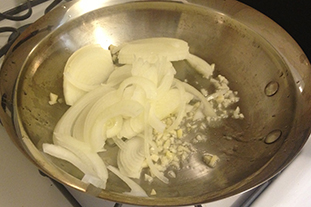When I think of Thanksgiving and the holidays, many wonderful things pop into my head. Even though Christmas music is not allowed in my presence until exactly one day after Thanksgiving, once it’s on I definitely crank up the radio. December 1st is also the start of the “25 days till Christmas” on ABC Family (which usually includes a Harry Potter weekend). But, in my life, the holidays mean more than just these commercialized pastimes, they mean time with my family, delicious food, and (hopefully!) a reprieve from homework. It’s also a time when our family breaks out certain traditions to get us into the spirit of the holiday, and Thanksgiving is where it all starts.
For some, this holiday time could be all about the food or the people or some odd tradition that involves paintball and a bagpipe player. But, for me, Thanksgiving had always been about the specificity: a certain way that the holiday was destined to go. There always had to be this kind of stuffing, and that kind of turkey and this kind of pie (for my family it’s a brined and roasted turkey with a wild mushroom and rice stuffing with apple pie…I am getting hungry just writing this). We had to play this music and drink that wine, or else, how would we know it’s Thanksgiving?! In part, this was because the one thing that always did change was where we would spend the holiday. This changed almost every year: when I was five, we spent Thanksgiving with our grandparents, when I was twelve, we went to the Outer Banks with some family friends, and for the past couple of years, our family has gathered with some cousins who live close to us. All of our ever-changing lives always turned the question of where we would go into a last-minute juggle. Eventually, because we never had a set plan, our Thanksgiving became rooted in traditions surrounding food and family. It became a time for sharing, for catching up with people we hadn’t heard from in a while, and for spending time with people we love. The host would cook the turkey and the rest of us would bring dishes. We laughed and drank and everyone helped each other when it came to cooking and eating. It was great, if a little exhausting.
However, when my sister and I were both studying abroad, we didn’t get that big fancy dinner or the time with our friends and family. Instead, that holiday became more about who was around us at that time. My sister and I spent one Thanksgiving while she was in Scotland at a pizza restaurant, having a wonderful chat about college and traveling. When I was living in England, I spent my holiday in the library before cooking with some friends in our dorms. It was the first time I realized that the holidays and Thanksgiving could be something different than what I had always experienced.
This year, most of our other family members have branched out, so we decided that this Thanksgiving would just be about us as a nuclear family. Instead of gathering with extended family and friends, we have decided to focus on us as a family. Though this will be very different from the hectic holidays of the past, it will be a nice break from having hoards of people all gathered in a tiny space.
Not only was it a good idea to try something different this year for practical reasons, but it’s also my last year at university and I have no idea where my life is going to take me in the next year and whether I will be able to spend this time with my family again. The same goes for my sister, who just moved to Boston. Before her life becomes too settled, she wanted to come home and spend one last year at home with the four of us. Neither of us really knows how to feel about this or how to approach future holidays. But if this year has taught us anything, it’s that one should do whatever they want for the holidays, regardless of what they feel that they “should” do.
Now that I’m in my last year of college, I’ve begun thinking about my life outside of my hometown and outside of my family. I always knew at some point I would have to but I’ve never really thought about defining myself outside of my parents and our traditions before. And though I am very happy to be spending the time with my parents and sister this year, it is not because I feel like I need to for tradition’s sake. It’s simply because I want to. And I realized, for me, that’s what the holidays need to be about: spending time with the people I love because I want to. So, whether that means time spent with your own family, the family of your significant other, your newfound friends, or all by yourself with six hours of Netflix, spend the time that you have on this earth with those you care about (or those you will grow to care about!) and make the most of the time you have together. Traditions only make up the surface of a holiday. What matters is the core: the love you share with those around you.

Photo by Rob Adams















